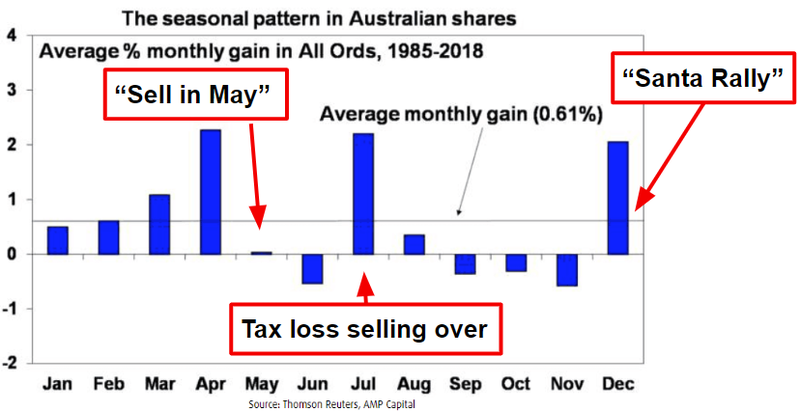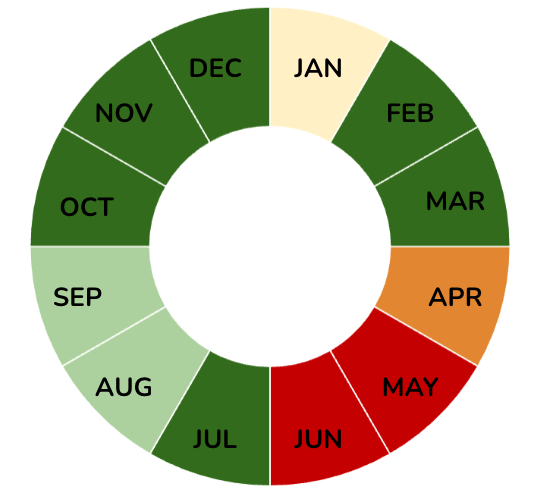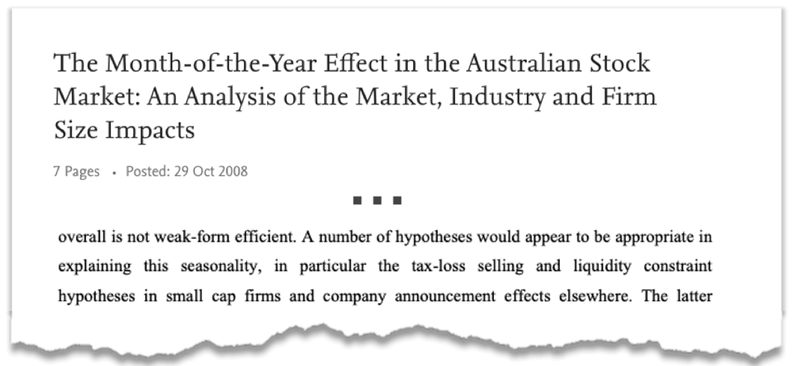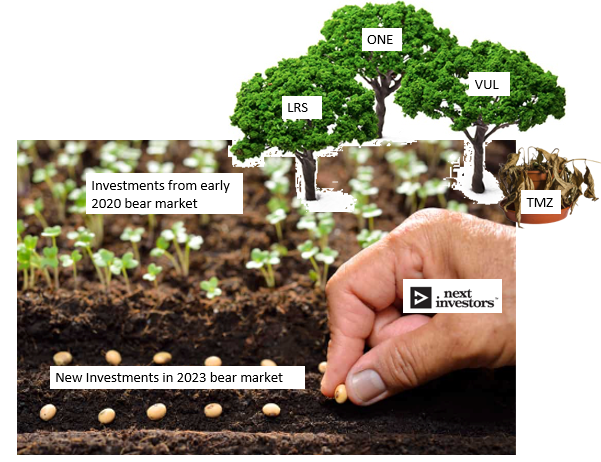Market Cycles and how we invest
Published 09-JUL-2023 13:00 P.M.
|
11 minute read
July started with a bang.
Despite a tough finish to the week on Friday, it seems like the sleeping giant that is the small cap market has woken up.
Fourteen companies in our Portfolios announced material progress this week, with a backlog of activity concentrated on Monday and Tuesday.
The month has kicked off exactly how we thought it would.
Higher levels of trading activity with tax loss selling dried up.
Adding fuel to the fire was the decision by the Reserve Bank of Australia to pause interest rates, providing a Tuesday afternoon boost to the market.
July is an interesting month on the small cap market calendar, it is a brief window of time between tax loss selling in May/June and the quarterly cash reveal at the end of July.
Companies that have low cash balances will likely look to raise capital in July before the cash balance “confession session” is revealed at the end of the month.
The way it generally works is:
- The June quarterly ends on 30 June 2023 - this is where the companies capture a “point in time” cash balance. Basically - whatever cash is in the tin on 30 June is what the company has to report in its June quarterly report.
- July 31st - This is the deadline companies have to put out their quarterly reports. Usually, the companies with low cash balances wait till the end of the month, and the ones with healthy cash balances report earlier.
The 30-day period between the quarter actually ending and the due date for quarterlies creates a mad rush for companies with very little cash left in the bank to raise capital.
Usually, companies looking to raise capital will push to get as much material news locked away and delivered for shareholders as early in the month as possible.
Then the last two weeks are about setting expectations and putting out some guidance on what the company aims to achieve over the next 12-24 months.
Once expectations are set, share prices settle (off the back of any material news), and the companies look to raise capital - hopefully from investors who are now interested after seeing the company kick a goal or two.
We expect this to be the theme of the market for the next three weeks.
For the companies that already have a strong cash balance, it is business as usual, and they can enjoy the increased market attention without the tax-loss selling pressure.
Basically with tax loss selling out of the way, we hope that when companies release positive announcements they won’t be sold into like we saw in May and June.
The cyclical nature of markets
Everyone knows that the markets are cyclical.
Supply and demand fluctuations move over years and even decades.
But there are also patterns to the markets within a year, and there are events that drive investing behaviour that play out time and time again.
Things from school holidays, tax time and the positivity that comes with a new year and reporting season all affect the broader market.
Below is a chart that tracks the seasonality of the All Ordinaries (largest 500 companies in Australia):

(Source)
This chart confirms what we already know through experience - that some months have a certain repeating pattern of trading activity.
But small caps are a bit different.
The low liquidity on small cap stocks means one large investor who needs to sell can crush a company’s share price.
And on the upswing, a fervour of interest in a stock with a tight register can see companies’ valuations rise extremely quickly.
However there are always patterns - and as investors in small caps, we have seen these patterns play out over the last 20+ years.
This is what we like to call the activity calendar for small cap stocks - green being generally periods of bullish trading, red being periods of generally bearish trading:

Obviously depending on broader market conditions (bull, bear or neutral), the monthly seasons will be dampened or accentuated.
So, how does this generally play out?
January - Brokers return from holidays and the small cap market picks up in the second half of the month.
February/March - expectations are high at the start of the calendar year, strong newsflow from companies as early wins are secured.
April - Strong newsflow in the lead-up to Easter after which the market quiets down.
May/June - Tax loss selling season.
July - Post-tax loss selling rally.
August/September - Annual report season, companies execute on key milestones / goals.
October/November - Pre-Santa rally in the lead up to Christmas.
December - Santa rally in the first two weeks of December. Companies and stockbrokers usually close up for the year after the 15th.
And then it all starts up again in the new year.
We have seen these patterns play out time and time again, but there are always exceptions.
We think this seasonality is more pronounced in the smaller end of the market - and we actually found an academic paper to support our theory.
Here is what the paper says:

(Source)
Our basic summary of the paper:
- Tax loss selling is real.
- Cash reveals in the quarterly season may cause companies to time operations so that they are ready to release news before this happens.
It all adds up to a frequently miserable June.
But as history shows - July usually starts off strongly.
As long-term Investors, we don't look at June as something to be feared, but as an opportunity.
When the markets are down we see this as planting season - where we look to make investments in beaten up stocks.
This is what we are doing at the moment, with a number of potential investments boiling away in the background.

The market moves up and down in cycles, and timing investments can be tricky.
But what we find is important is backing good stocks and holding for the long term to give the management time to execute on their plan.
In other news... which companies do we expect to release significant announcements in the next few weeks
Here is a list of some of the companies in our portfolio that we are expecting to deliver material news in the coming weeks:
Solis Minerals (ASX: SLM)
Catalyst: Drill results for lithium in Brazil.
Our take: Drilling started a week ago, and we are hoping to see some positive news from the company this month.
What we want to see: we are hoping to see a nice photo of visual spodumene in the drillcores.
Spodumene is generally the host rock for high-grade lithium, visual spodumene will be a positive first indication of potential economic lithium mineralisation.
After drilling is done, it will be all about the assay results - we don't expect the assays to come in before the end of this month, though.
Minbos Resources (ASX:MNB)
Catalyst: Phosphate offtake agreement in Angola.
Our take: MNB is in the middle of building its phosphate project in Angola.
Over the last ~5 weeks, the company signed an EPCM contract (a construction contract) for its fertiliser plant and received all of the final permits for the construction of its project to be completed.
At the same time, MNB announced that it was now “well advanced in its offtake discussions” and “the board anticipates making an announcement... shortly”.
What do we want to see: We want to see MNB sign an offtake agreement.
Tempus Resources (ASX: TMR)
Catalyst: Maiden JORC resource for Canadian gold project.
Our take: TMR flagged in its announcement on the 5th of June that the company’s JORC resource was targeted for the end of June.

What we want to see: The news is now a week overdue, and we are hoping TMR delivers the resource in the coming weeks.
Considering the project already has a historical resource of 300k gold ounces, we have set up our bull/base/bear case expectations as follows:
- Bull case = >300k oz of gold
- Base case = 100-300k oz of gold
- Bear case = <100k oz of gold
There have already been some big milestones announced in July
For those who felt it - it was a pretty newsflow heavy five first days of the quarter...
Already, a few of the companies we were waiting on to deliver material news have done so.
Here are the companies that delivered material news this week:
GTi Resources (ASX:GTR)
News announced: Uranium JORC Resource Upgrade
Why it matters: This JORC resource provides GTR a platform to build a larger uranium resource in the heart of the US, to the size at which it could potentially be taken out by a larger neighbor next door.
Our coverage: GTR boosts its uranium resources in Wyoming, as USA seeks more uranium
Kuniko (ASX:KNI)
News announced: Cornerstone investment and offtake agreement from Stellantis.
Why it matters: KNI now has one of the world's largest carmakers in its corner as its 19.99% shareholder. It is ready to buy its nickel/cobalt product if KNI ever puts one of its Norwegian projects into production.
Our coverage: EU Automaker Stellantis Snaps up 19.99% of EU Battery Metals Explorer KNI
LCL Resources (ASX:LCL)
News announced: Strong gold hits from drilling campaign in PNG
Why it matters: On drillhole 5, LCL hit more gold ~150m to the north of previous hits AND struck some interesting copper grades. The copper grades might be an early indication that LCL is getting closer to a potential copper/gold porphyry source structure.
Our coverage: Five out of five for LCL: Gold discovery developing before our eyes
Titan Minerals (ASX: TTM)
News announced: 3.12 million oz. JORC resource announced (conversion from foreign resource estimate)
Why it matters: TTM’s JORC resource now underpins its valuation and it can be more properly compared to its peers.
Our coverage: TTM Defines a 3 million oz. Gold JORC Resource
Two of the major catalysts delivered this week were JORC resources.
JORC resources can take months or even years to deliver, so seeing two land in our portfolio in the same week was notable.
JORC resources materially de-risk company projects and allow the company to be more fairly compared to its peers based on in-ground resources.
🎓To learn more about JORC resources read: What is a JORC resource? How does a company define a resource?
What else did we write this week 🧬 🦉 🏹
DXB: US$3.5BN kidney deal puts DXB’s current valuation in perspective
A deal signed last month worth US$3.5BN gives good context on what it might look for DXB if the company’s phase 3 clinical trial for a rare kidney disease is successful.
NHE: NHE drilling this quarter - Rig secured, fully funded
NHE now has its drill rig secured. Not long to go before the company drills what has the potential to be one of the largest helium projects in the world this quarter.
Quick Takes 🗣️
88E acquires more production assets in Texas, USA
DXB to expand patient base in Europe?
EMN awards EPCM contract, gives permitting update
EXR to drill QLD gas project in October 2023
GAL chasing a second discovery with 4,000m RC drill program
LCL step out drilling delivers more gold mineralisation
MAN selects two wells to re-enter and sample for lithium in USA
OKR - uranium tech partner permit renewed
TEE 2D seismic program in QLD about to kick off
TTM JORC resource estimate in Ecuador imminent
Macro News - What we are reading 📰
Cannabis
Cannabis producer Dragonfly set for ASX debut (AFR)
Hydrogen
Spain May Be Moving Too Fast in Its Green Energy Push (bloomberg)
With Plenty of Clean Energy, Brazil Aims for Green Hydrogen Export Market (bloomberg)
Lithium
Chinese battery giant CATL seals $1.4 billion deal to develop Bolivia lithium (Reuters)
Nickel
Australia’s richest man walks into a nickel bar (AFR)
Uranium
Exclusive: Bill Gates on the future of nuclear energy, AI (ABC)
⏲️ Upcoming potential share price catalysts
Updates this week:
- GTR: Maiden resource estimates across two of its uranium projects in Wyoming, USA.
- Catalyst completed ✅ GTR delivered its second JORC resource this week. See our note on the news here.
- LCL: Maiden drilling underway at primary PNG copper-gold target.
- LCL put out the assay results from its fifth drillhole at its PNG gold project. See our note on the news here.
- NHE: Scheduled to drill two targets at its helium project in Tanzania (Q3 2023).
- NHE secured its drill rig on Friday. See our note on the news here.
- BOD: Phase III clinical trial for CBD insomnia treatment.
- “Last patient, last visit” due early July, results delayed till august. Read our note on this trial and what’s next for BOD here.
- KNI: Drilling 3/3 of its Norwegian battery metals projects in Europe.
- No drilling news this week, but KNI announced a deal signed with one of the world’s largest carmakers, Stellantis. See our note on the news here.
- GAL: Drilling at its Jimberlana & Mission Sill prospects at its PGE project in WA.
- GAL kicked off its 4,000m RC drill program this week. See our Quick Take on the news here.
- TG1: Drilling at its NSW gold project in May.
- TG1 finished drilling its NSW gold project this week, and assays from the program are now pending. See the company’s announcement here.
- DXB: Interim Analysis of Phase III Clinical Trial on FSGS (Q4 2023).
- DXB announced approvals from the European Medicines Agency for the companies. See our Quick Take on the news here.
No material news this week:
- LNR: >10,000m drill program at rare earth’s project in WA.
- SLM: Maiden drill program at its Brazilian lithium project:
- MNB: Offtake agreement for its phosphate fertiliser project.
- IVZ: Drilling oil & gas target in Zimbabwe, Myuku-2 (Q3, 2023).
- TMR: Maiden JORC resource estimate for its Canadian gold project.
Have a great weekend,
Next Investors
General Information Only
S3 Consortium Pty Ltd (S3, ‘we’, ‘us’, ‘our’) (CAR No. 433913) is a corporate authorised representative of LeMessurier Securities Pty Ltd (AFSL No. 296877). The information contained in this article is general information and is for informational purposes only. Any advice is general advice only. Any advice contained in this article does not constitute personal advice and S3 has not taken into consideration your personal objectives, financial situation or needs. Please seek your own independent professional advice before making any financial investment decision. Those persons acting upon information contained in this article do so entirely at their own risk.
Conflicts of Interest Notice
S3 and its associated entities may hold investments in companies featured in its articles, including through being paid in the securities of the companies we provide commentary on. We disclose the securities held in relation to a particular company that we provide commentary on. Refer to our Disclosure Policy for information on our self-imposed trading blackouts, hold conditions and de-risking (sell conditions) which seek to mitigate against any potential conflicts of interest.
Publication Notice and Disclaimer
The information contained in this article is current as at the publication date. At the time of publishing, the information contained in this article is based on sources which are available in the public domain that we consider to be reliable, and our own analysis of those sources. The views of the author may not reflect the views of the AFSL holder. Any decision by you to purchase securities in the companies featured in this article should be done so after you have sought your own independent professional advice regarding this information and made your own inquiries as to the validity of any information in this article.
Any forward-looking statements contained in this article are not guarantees or predictions of future performance, and involve known and unknown risks, uncertainties and other factors, many of which are beyond our control, and which may cause actual results or performance of companies featured to differ materially from those expressed in the statements contained in this article. S3 cannot and does not give any assurance that the results or performance expressed or implied by any forward-looking statements contained in this article will actually occur and readers are cautioned not to put undue reliance on forward-looking statements.
This article may include references to our past investing performance. Past performance is not a reliable indicator of our future investing performance.






